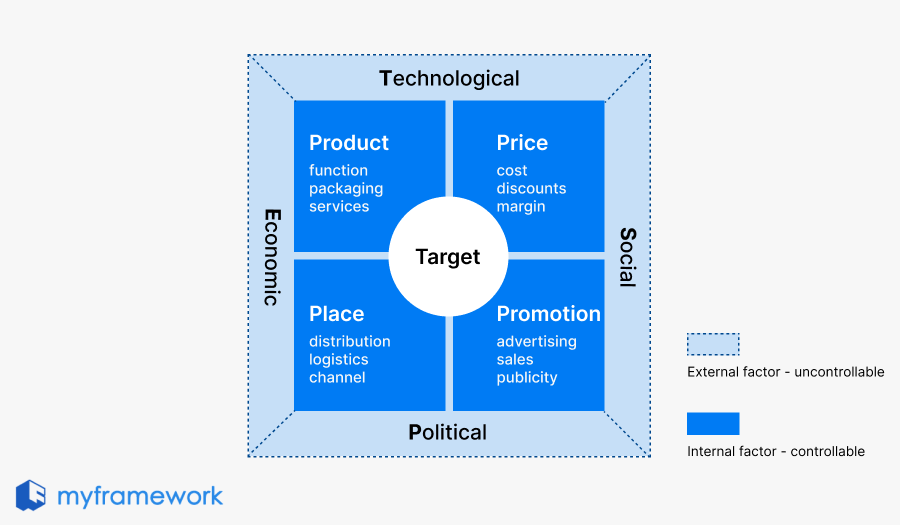What is 4P Marketing?
Wonder how businesses formulate strategies to capture your attention and deliver exactly what you need? Enter the 4P Marketing – one of the most fundamental and widely taught theories in marketing.
Developed by E. Jerome McCarthy in the 1960s, this model has stood the test of time and remains a cornerstone of modern marketing education and practice. Whether you’re a budding marketer or a seasoned professional, understanding the 4Ps is essential for creating effective strategies that connect with audiences.
The Core Concept of 4P Marketing
The core concept of 4P marketing lies in creating a balanced strategy that considers every angle of bringing a product or service to market. It’s about aligning these four factors—Product, Price, Place, and Promotion—to meet customer needs and achieve business goals.
Let’s break down the 4Ps:
Product
This is what you’re offering – either a tangible good or an intangible service. It’s essential to focus on features, design, quality, branding, and the problem it solves for your audience.
Price
Determining the right price involves understanding your costs, customer value perception, and competitor pricing. Too high, and you might deter buyers; too low, and you might undervalue your offering.
Place
This is all about how and where your product reaches the customer. It could be a physical store, online platforms, or a combination. Ensuring the right distribution channels is key to accessibility.
Promotion
This covers the activities you use to communicate with your audience, like advertising, public relations, social media, and discounts. It’s how you make your product known and desirable.
Unlock all frameworks and templates
Unlock exclusive thinking frameworks and practice templates.
Become a member to access all premium content to elevate your thinking!
Why 4P Marketing is a Classic?
We don’t need to overstate the value of the 4P Marketing – it’s straightforward, helps create a holistic marketing strategy, and ensures you cover all critical areas.
What’s truly fascinating about learning frameworks is the way they interconnect. Let’s explore how the 4P Marketing Mix ties into PEST, which focuses on external macro-environmental factors that influence a business’s operations and strategic decisions.

The external environment analyzed by PEST significantly impacts the decisions made within the 4P framework. For example:
- Product: Technological trends from PEST may influence the design or features of a product.
- Price: Economic factors such as inflation or currency fluctuations analyzed in PEST can affect pricing strategies.
- Place: Political factors like trade regulations or tariffs from PEST may influence distribution channels.
- Promotion: Social factors from PEST, such as cultural preferences or demographic shifts, shape how promotions are designed and delivered.
In essence, PEST provides the external context, while 4P focuses on internal execution within that context. When crafting your 4P marketing strategy, it’s essential to zoom out and evaluate how the macro-environment may affect your plan, either positively or negatively.
This broader perspective ensures your strategy aligns with external realities, helping to steer your efforts in the right direction.
From 4P to 4C
The 4C marekting model in marketing was introduced by Robert F. Lauterborn in 1990 as an alternative to the traditional 4P.
While the 4P model is product-focused, the 4C model is a customer-centric approach that places more emphasis on delivering value from the customer’s perspective.
Learn more about 4C marketing model.

